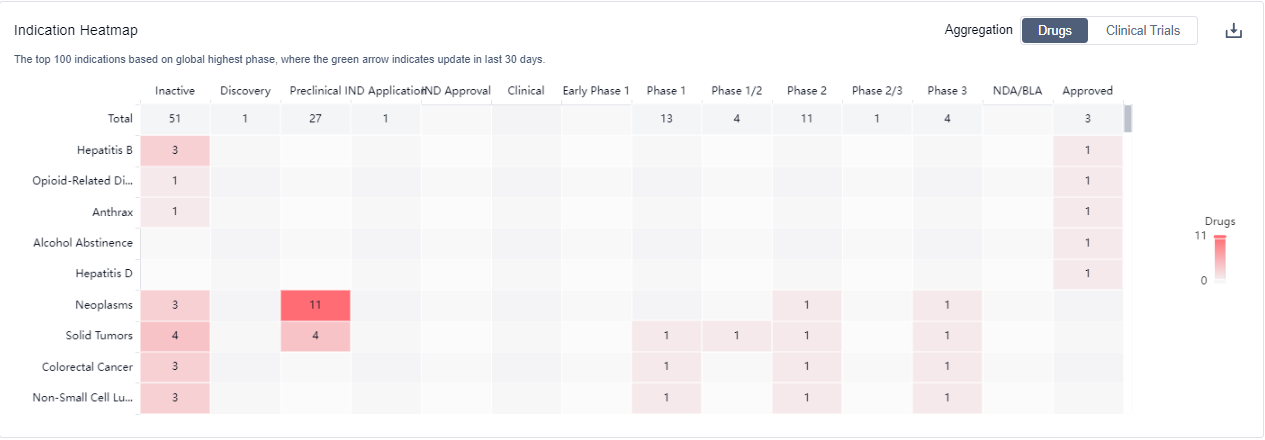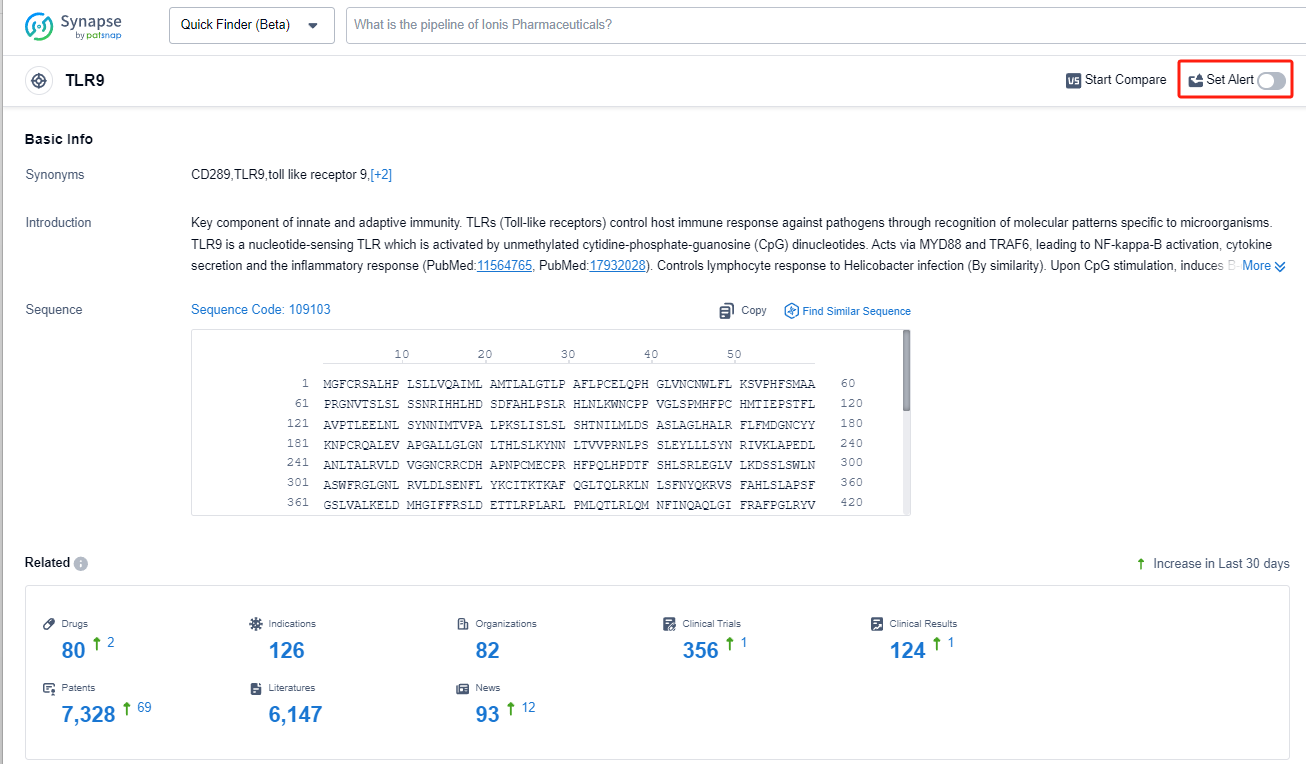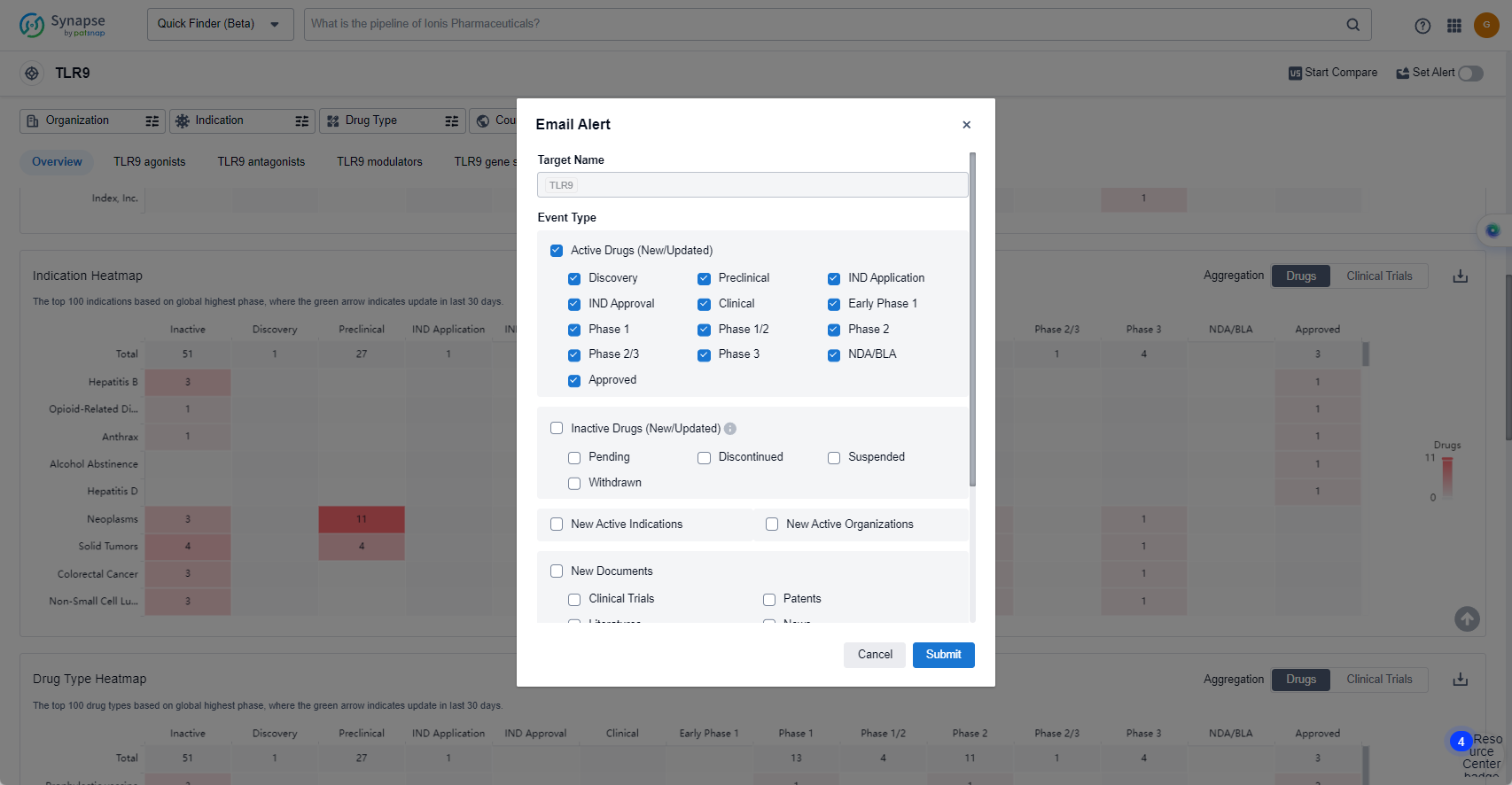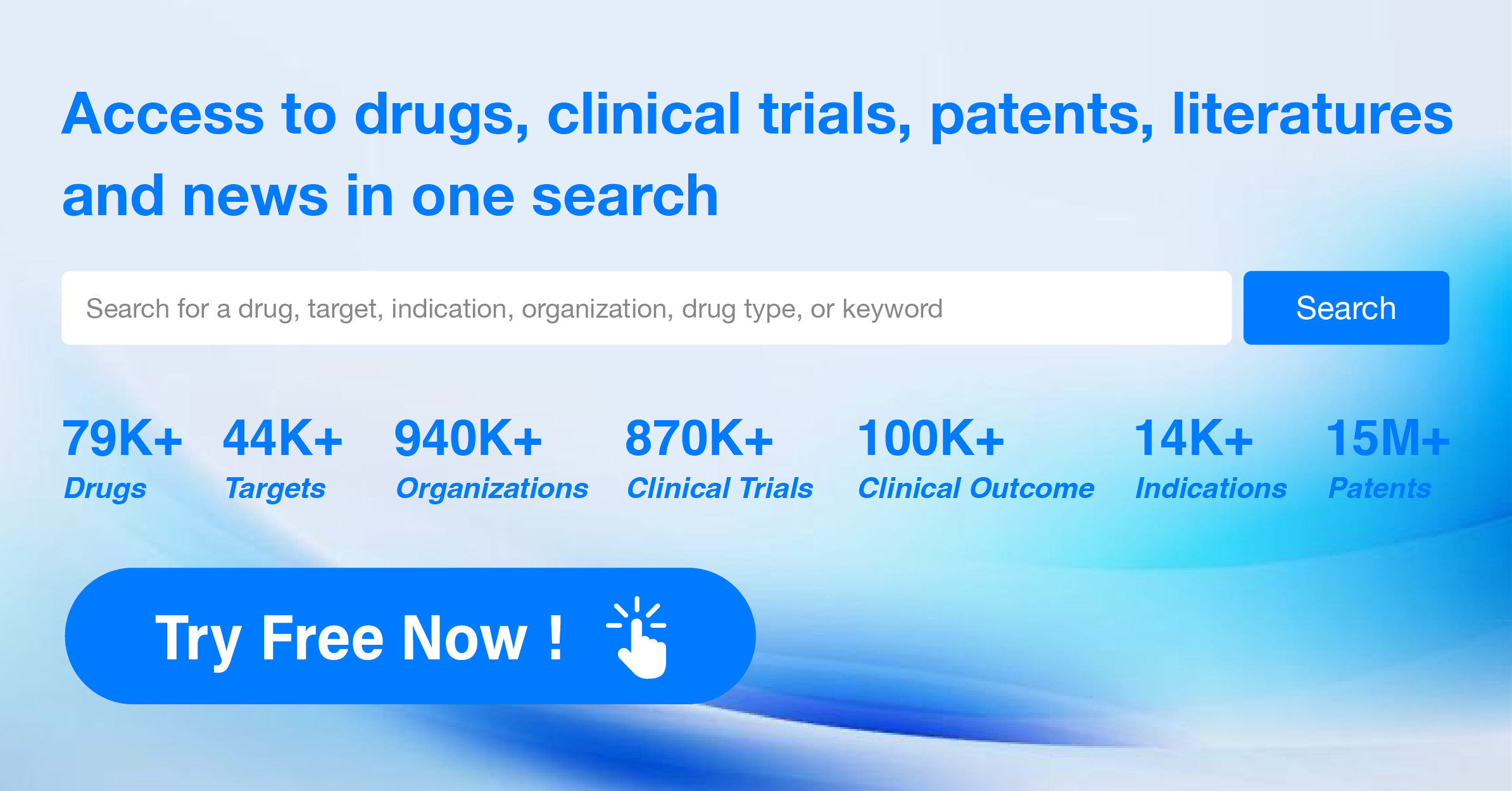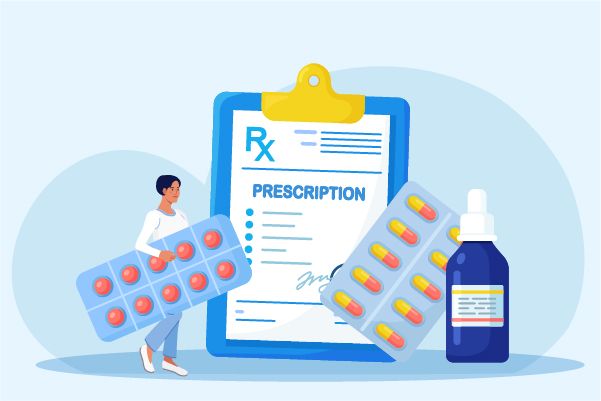TLR9 agonists: What They Are and How to Stay Updated on the Latest Research
TLR9, or Toll-like receptor 9, is a crucial component of the innate immune system in the human body. It is primarily expressed in immune cells such as dendritic cells and B cells. TLR9 recognizes and binds to unmethylated CpG DNA motifs, which are commonly found in bacterial and viral genomes. Upon activation, TLR9 triggers a signaling cascade that leads to the production of pro-inflammatory cytokines and the activation of immune cells. This activation plays a vital role in the defense against microbial infections and the initiation of adaptive immune responses. Understanding the role of TLR9 has significant implications in the development of novel immunotherapies and vaccines.
The analysis of target TLR9 reveals a competitive landscape with multiple companies actively involved in its development. Dynavax Technologies Corp., Emergent BioSolutions, Inc., and Alkermes Plc are among the companies growing fastest under this target. The highest stage of development is the "Approved" phase, indicating successful regulatory approval for certain drugs. Indications such as Hepatitis B, Neoplasms, and Solid Tumors have seen approved drugs. Prophylactic vaccines and small molecule drugs are progressing rapidly, indicating intense competition. The United States, European Union, and the United Kingdom are leading in terms of development, with some progress observed in China. Overall, the analysis suggests a promising future for the development of target TLR9 in the pharmaceutical industry.
How do they work?
TLR9 agonists are a type of molecules that activate the Toll-like receptor 9 (TLR9) pathway. Toll-like receptors (TLRs) are a group of proteins found on the surface of various immune cells. They play a crucial role in recognizing and responding to microbial pathogens, such as bacteria and viruses.
TLR9 specifically recognizes unmethylated CpG motifs, which are commonly found in the DNA of bacteria and viruses. When TLR9 binds to these CpG motifs, it triggers a signaling cascade that leads to the activation of immune responses, including the production of pro-inflammatory cytokines and the maturation of antigen-presenting cells.
TLR9 agonists are synthetic or naturally occurring compounds that mimic the CpG motifs and can directly bind to TLR9, activating its signaling pathway. By stimulating TLR9, these agonists can enhance the immune response against infections and potentially be used as immunotherapeutic agents.
From a biomedical perspective, TLR9 agonists have been investigated for their potential in vaccine adjuvants, cancer immunotherapy, and the treatment of certain viral infections. They have shown promise in boosting immune responses and promoting the recognition and elimination of pathogens or cancer cells by the immune system.
List of TLR9 Agonists
The currently marketed TLR9 agonists include:
- Anthrax Vaccine Adsorbed, Adjuvanted (Emergent BioSolutions)
- Adjuvanted Hepatitis B vaccine (Recombinant)(Dynavax Technologies Corp.)
- Cobitolimod
- Lefitolimod
- SD-101 (Dynavax)
- Vidutolimod
- AST-008
- DUK-CPG-001
- DV-281
For more information, please click on the image below.
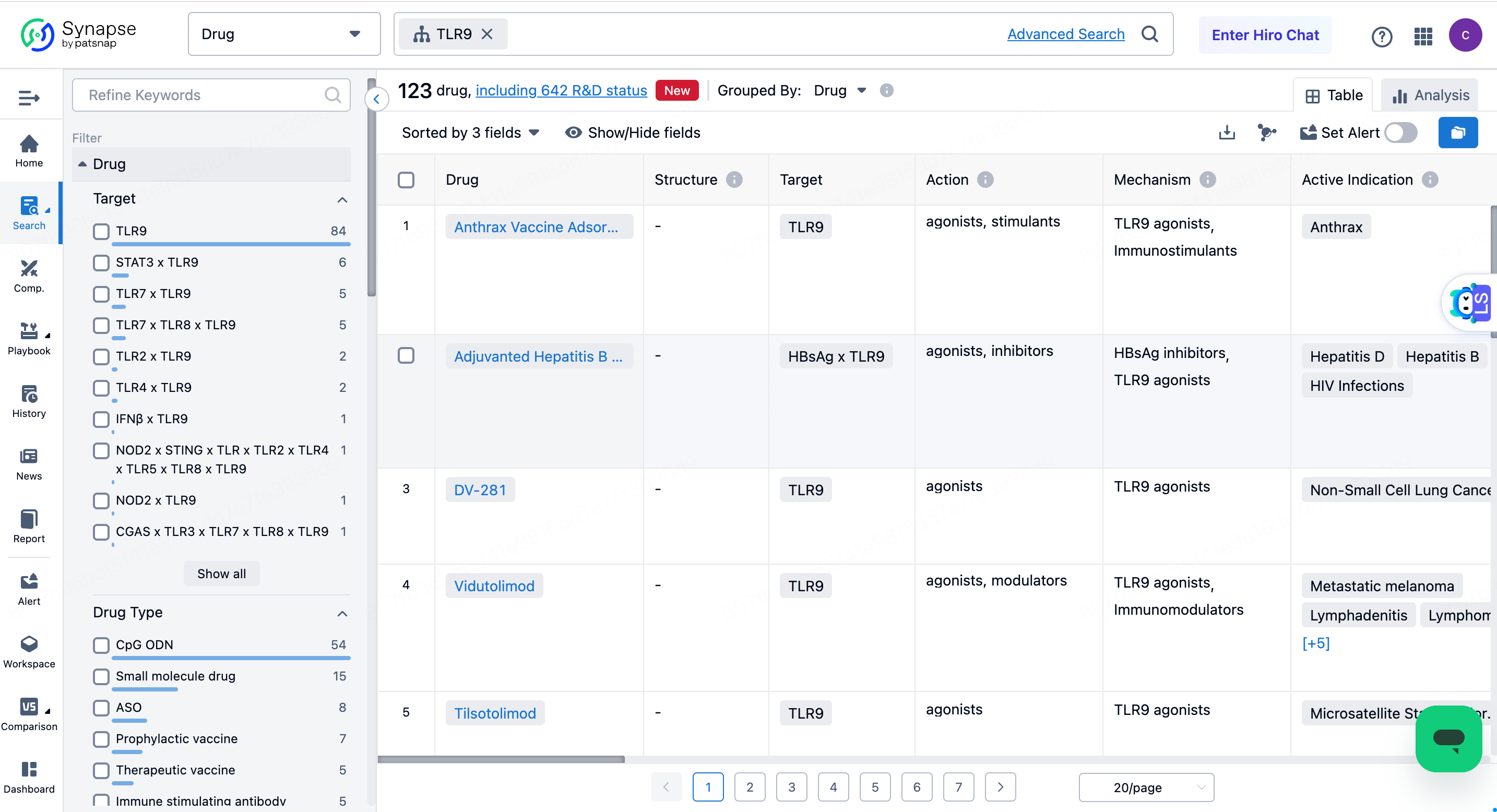
What are TLR9 agonists used for?
TLR9 agonists have been investigated for their potential in vaccine adjuvants, cancer immunotherapy, and the treatment of certain viral infections. For more information, please click on the image below to log in and search.
How to obtain the latest development progress of TLR9 agonists?
In the Synapse database, you can keep abreast of the latest research and development advances of TLR9 agonists anywhere and anytime, daily or weekly, through the "Set Alert" function. Click on the image below to embark on a brand new journey of drug discovery!
